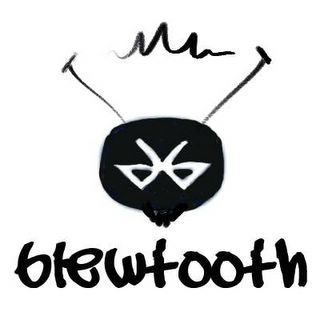Air tagging...
My last posting shows my tag. I have taken the pseudonym "Blewtooth", although it is not unique. However, tagging is territorial. I don't know of any tagger with this name, so I've staked my claim on it, at least in my locale.
Why the interest in tagging? Apart from a long association with looking at quirky mobile ideas, and some direct exposure to the hip-hop world as a mobile consultant, I've been writing about the topic for my new book ("Wireless Wonders" - the same name as this blog).
Don't ask me what's the point of leaving graffiti tags in space - "air tagging". Graffiti has its own language, ideas, space, culture and art (read "Street Logos"). Using the mobile is just an extension of the theme. It's also an interesting idea with which to explore mobile location-finding and related technologies, which combine to give the more generic possibility of "Spatial Messaging".
I am convinced that virtual graffiti will have a much wider following than the "real thing". There's no vandalism involved, which makes it a possibility for most of us. Moreover, digital tags are just that - digital. They can be created digitally using an array of tools. This also allows wider access. Most of us don't have sufficient dexterity with spray cans.
Air tagging is a more private affair than physical tagging. With actual tags, the public gets to see them whether they want to or not. However, this is often an almost irrelevant side effect, as the public aren't supposed to be a part of the conversation. They're outside the culture.
It helps to think of tagging as just another means of communication. Imagine an instant messaging interface that doesn't detect friends offline and online, but taggers "in zone" and "out of zone". If the tagger's "in zone", that means his or her tag is nearby and can be seen using the app. Taggers might leave a variant tag at each spot they've tagged. These could be collected into a tag gallery (or a standard photo gallery, or mob-blog).
The really interesting part of air tagging is that taggers can communicate with each other, always via their pseudonyms and therefore almost always "anonymously". Different modes and rules of communication could be envisaged, such as instant messaging being possible only whilst "in zone". Also, comments can be left, which can be tags themselves, or text, or even photos. It is interesting to think of "photo verification" as a testimony to being present "in zone" i.e. at the place where the tag was originally left. This can be combined with mapping, which is another interesting extension to the theme.
The variants on air tagging are many and there is no point in speculating about all of them. Once it becomes a reality, the taggers will make their own rules and a new sub-culture will emerge; I am convinced of it.
Technically, there are a few barriers to overcome. One of them is the ability to detect proximity to tags. This is simply a variant on event-driven location-finding, which is a generic problem that needs solving in order for a whole class of important location services to emerge.
Join my email list
Subscribe to my "100 Mobile Product Ideas" free e-book


